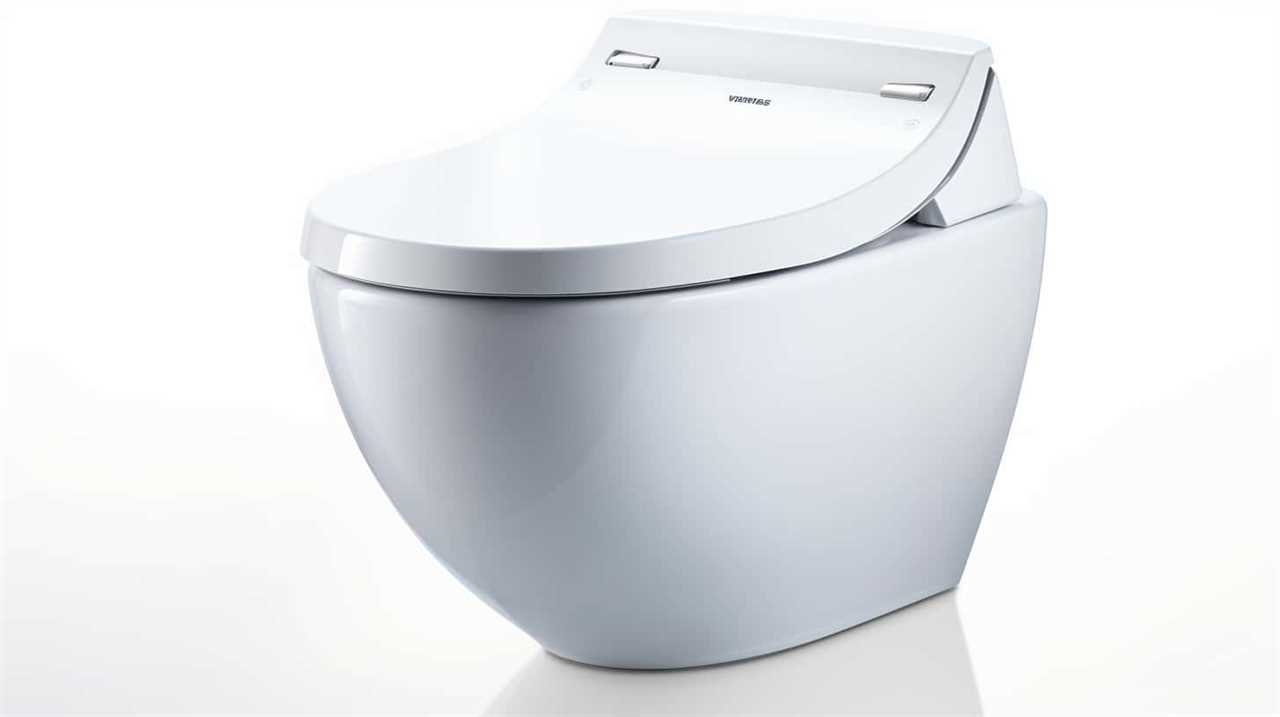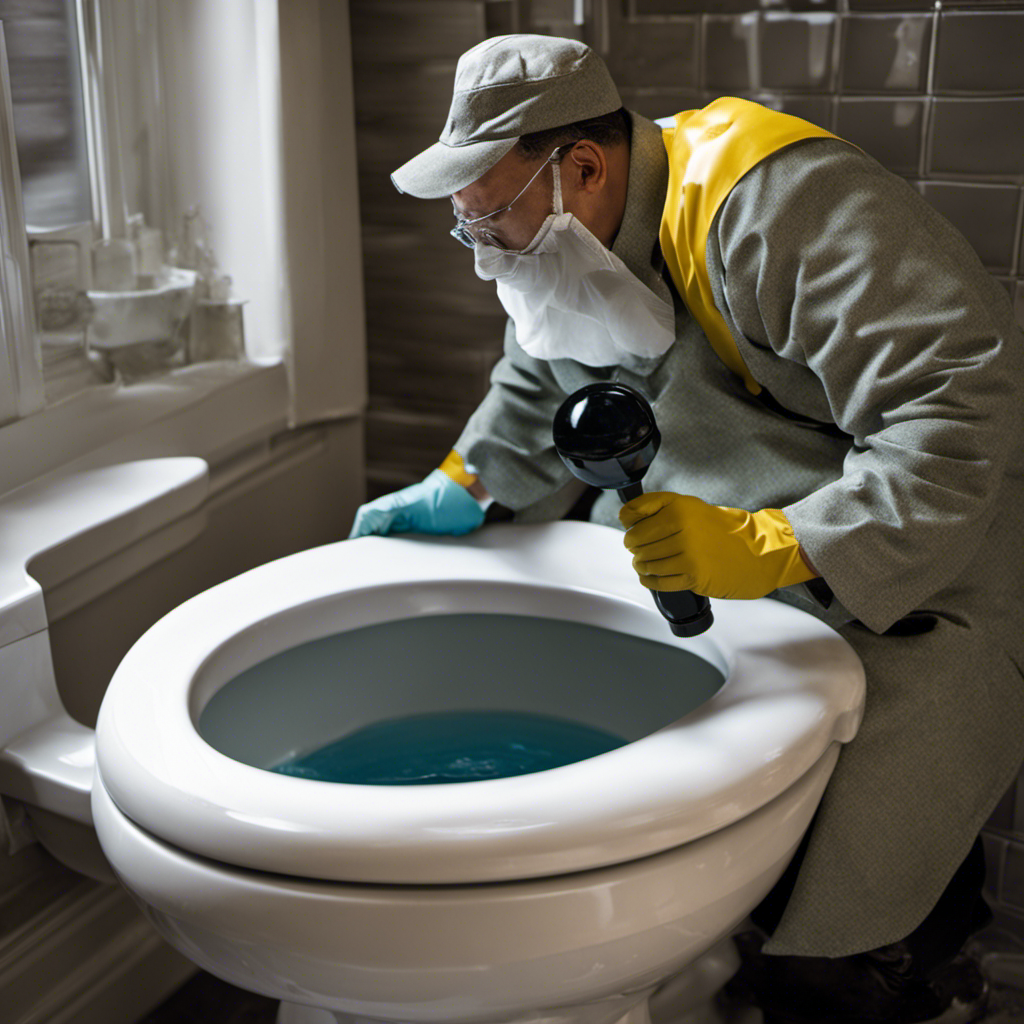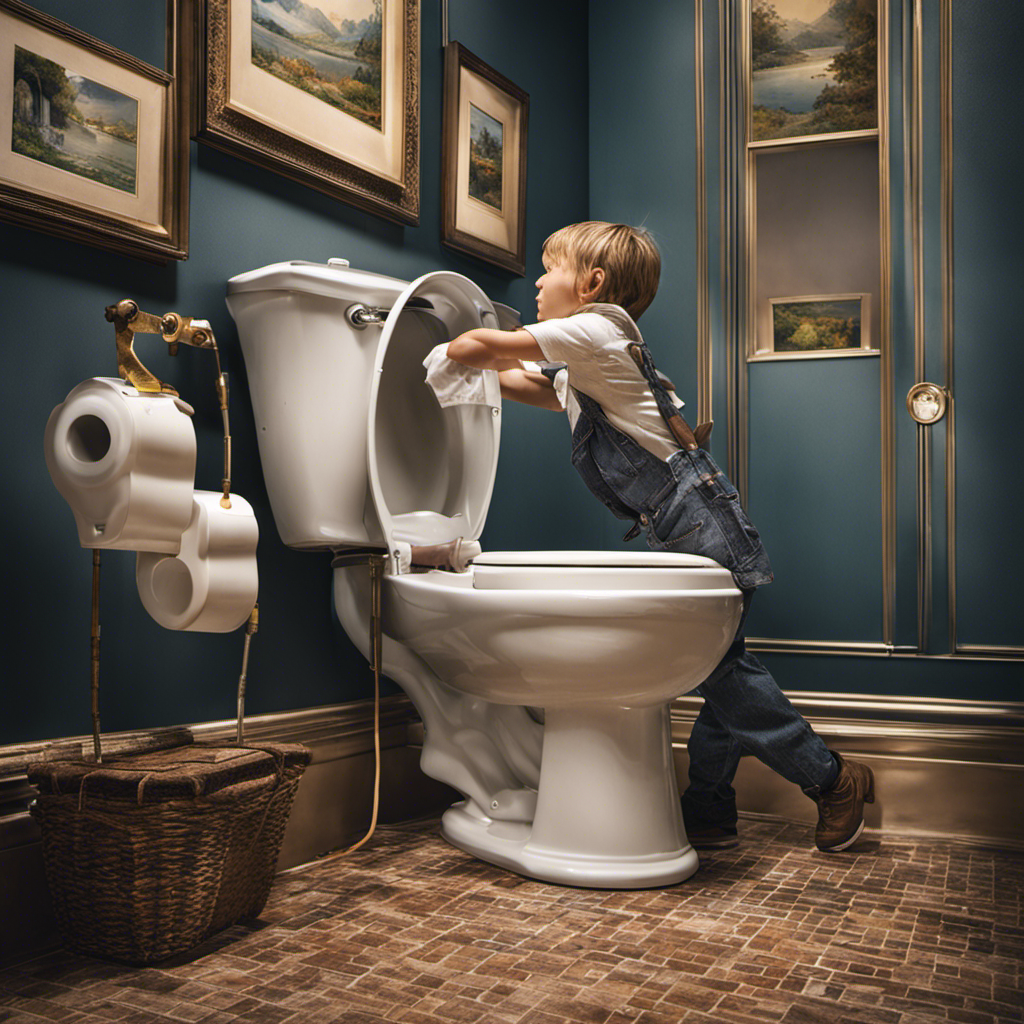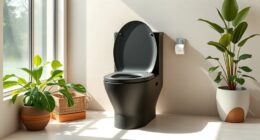- "Proper disposal: why it’s important to only flush toilet paper on a plane"
- "Consequences of flushing non flushable items on a plane"
Have you ever thought about what happens to all the waste when thousands of passengers flush their toilets at 30,000 feet in the air every day on planes around the world?
In this article, we will explore the mechanics behind plane toilets, from the flush to the tank, and how the vacuum system works. We will also discuss the importance of maintaining hygiene at high altitudes and the environmental impact of the waste.
Get ready for a fascinating journey into the world of plane toilets!
Key Takeaways
- Plane toilets use a vacuum system that relies on air pressure difference to flush waste.
- The waste is directed into a holding tank located in the lower section of the airplane.
- Regular maintenance and cleaning procedures are implemented to maintain hygiene standards.
- Passengers are encouraged to practice personal hygiene, such as washing hands frequently and covering the mouth and nose when sneezing or coughing, for a cleaner and safer flying experience.
The Mechanics of Plane Toilets
When operating a plane toilet, we must understand the mechanics behind its flushing system. Proper toilet maintenance and efficient water usage are crucial factors in ensuring the smooth operation of these systems.

Plane toilets use a vacuum system that relies on the difference in air pressure to flush waste away. When the flush button is pressed, a valve opens, allowing the waste and the air in the toilet bowl to be sucked into a vacuum chamber. This sudden rush of air creates a powerful suction force, which quickly removes the waste from the bowl.
The waste is then directed into a holding tank located in the lower section of the airplane. From flush to tank: where does the waste go? Let’s explore this in the next section.
From Flush to Tank: Where Does the Waste Go
To understand the journey of waste from flush to tank, let’s delve into the intricate system that efficiently manages its disposal.
The waste disposal process on a plane involves a series of carefully designed mechanisms. When a passenger flushes the toilet, the waste is propelled into an onboard storage tank. This tank, also known as the blue or waste tank, is specifically designed to safely contain and store the waste until the plane lands.

The waste disposal process takes into consideration health and safety considerations to ensure that the waste is properly contained and doesn’t pose a risk to passengers or crew members. This includes sealing the tank to prevent leaks or odors, as well as regular maintenance and cleaning procedures to maintain hygiene standards.
The Vacuum System: How Does It Work
As we delve further into the waste disposal process on a plane, let’s explore how the vacuum system efficiently manages the journey of waste from flush to tank.
The vacuum system operation is a crucial part of the toilet waste disposal process on an aircraft. Here’s how it works:
- The vacuum system uses a powerful pump to create suction in the toilet bowl.
- When the toilet is flushed, the waste is quickly drawn into the vacuum system.
- The vacuum system transports the waste through a network of pipes, using air pressure to propel it forward.
- The waste is then stored in a tank located in the lower part of the aircraft.
Maintaining Hygiene at High Altitudes
To ensure cleanliness and sanitation during flights, we prioritize maintaining hygiene at high altitudes. Cabin sanitation is crucial for preventing the spread of germs and ensuring a healthy environment for all passengers. Airlines have rigorous cleaning protocols in place to disinfect surfaces, including tray tables, armrests, and lavatories.
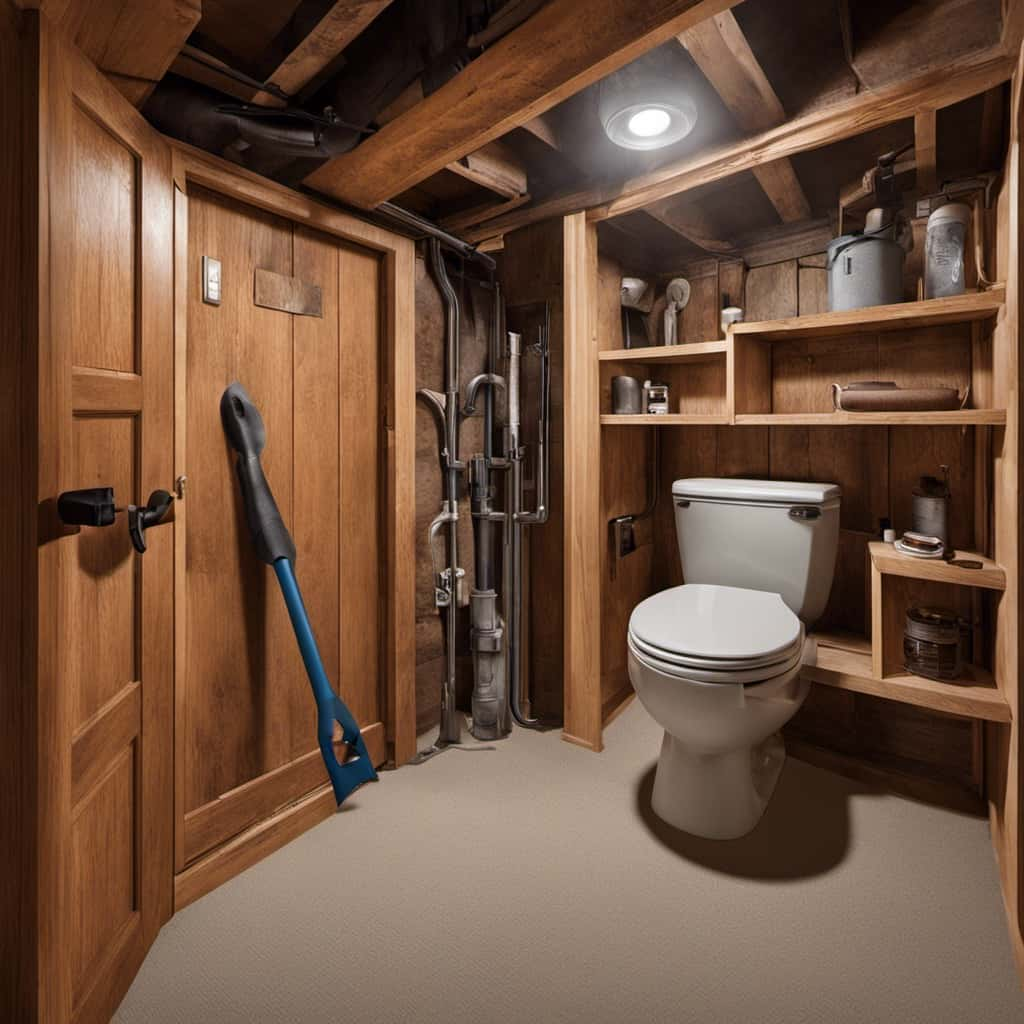
Additionally, personal hygiene plays a vital role in preventing the transmission of illnesses. Passengers are encouraged to wash their hands frequently with soap and water or use hand sanitizer. It’s also advisable to carry disinfectant wipes to clean personal spaces before use. Furthermore, covering the mouth and nose when sneezing or coughing, and avoiding touching the face can help reduce the risk of infection.
By practicing these personal hygiene tips for air travel, passengers can contribute to a cleaner and safer flying experience.
As we move on to discuss the environmental impact, let’s explore what happens to the waste after flushing the toilet on a plane.
Environmental Impact: What Happens to the Waste?
When we flush the toilet on a plane, the waste goes through a specific process to ensure proper disposal and minimize environmental impact. Here is what happens to the waste:
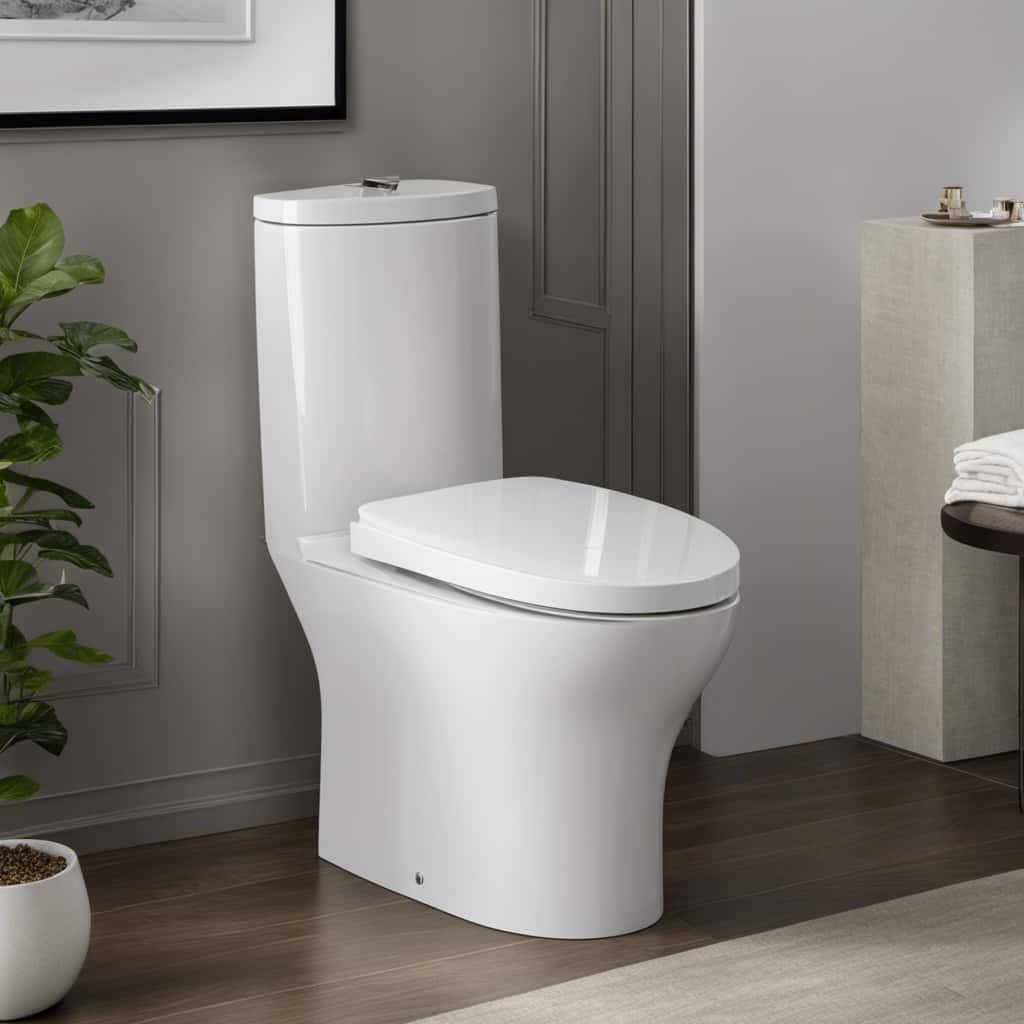
- Waste treatment: The waste is collected in a tank located in the aircraft’s lower compartment. This tank is specifically designed to hold and treat the waste safely.
- Deodorizing agents: To control odors, deodorizing agents are added to the waste tank. These agents help mask any unpleasant smells.
- Disinfection: The waste is treated with disinfecting chemicals to kill harmful bacteria and pathogens.
- Ecological consequences: Once the plane lands, the waste is removed and transported to a treatment facility on the ground. Here, it undergoes further processing to ensure that any remaining contaminants are properly treated before disposal.
This process ensures that the waste is handled in a responsible manner, minimizing its impact on the environment.
Frequently Asked Questions
Can You Use the Toilet on a Plane During Takeoff and Landing?
Yes, we can use the toilet on a plane during takeoff and landing. However, it’s important to note that specific airlines may have different policies regarding toilet accessibility due to hygiene regulations.
How Often Are Plane Toilets Cleaned?
Airplane bathroom hygiene is crucial for passenger comfort. Regular airplane bathroom maintenance ensures cleanliness and prevents unpleasant odors. We take pride in our commitment to cleanliness and ensure that our plane toilets are cleaned regularly.
Are There Any Special Instructions for Using the Toilet on a Plane?
When using the airplane lavatory, there are a few special instructions to keep in mind. Follow the posted signs and guidelines, use the provided hygiene products, and be mindful of not flushing anything other than toilet paper.
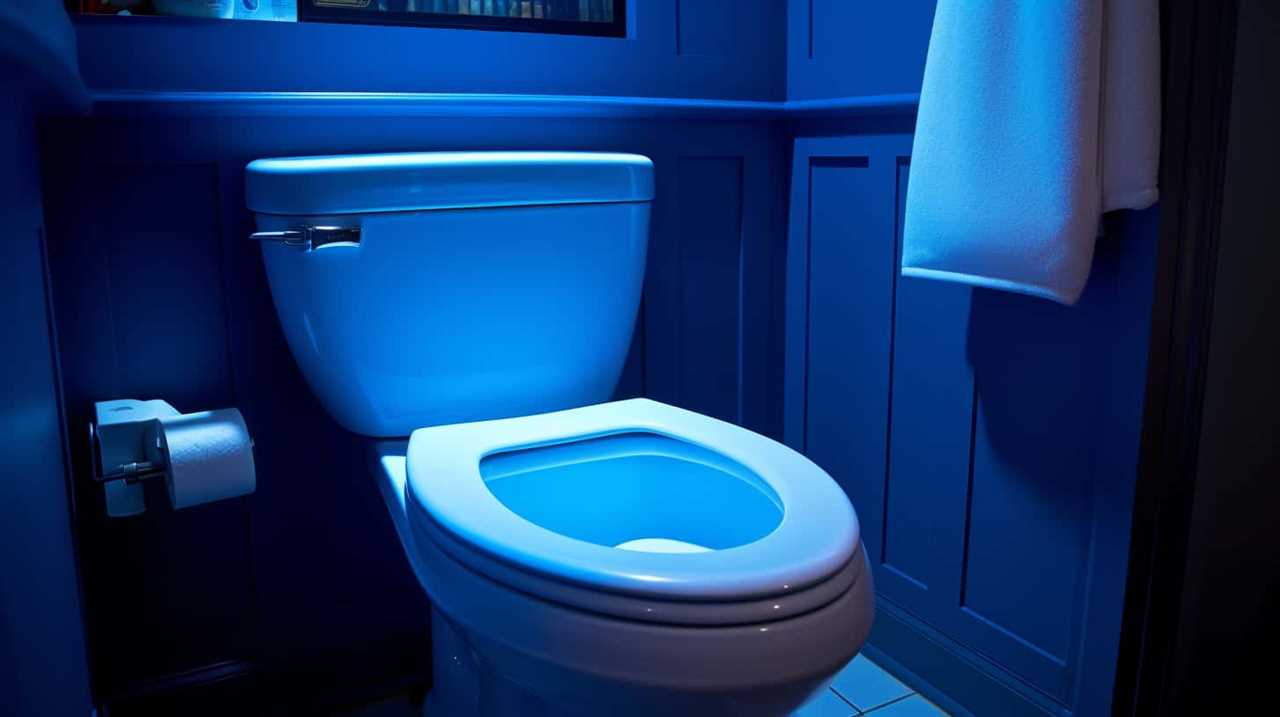
What Happens if Someone Flushes Something Other Than Toilet Paper Down the Toilet?
When someone flushes something other than toilet paper down the airplane toilet, it can cause serious clogs and damage to the plumbing system. This can lead to delays, costly repairs, and inconvenience for all passengers.
Are There Any Restrictions on Using the Toilet During Turbulence?
During turbulence, there may be restrictions on using the toilet. Safety measures are in place to ensure passenger safety. These measures may include seatbelt signs being illuminated and flight attendants advising against using the toilet for your safety.
Conclusion
In conclusion, understanding the mechanics of plane toilets helps us appreciate the complex system that handles our waste at high altitudes.
With a vacuum system in place, the waste is efficiently transported to a holding tank, ensuring hygiene is maintained during the flight.
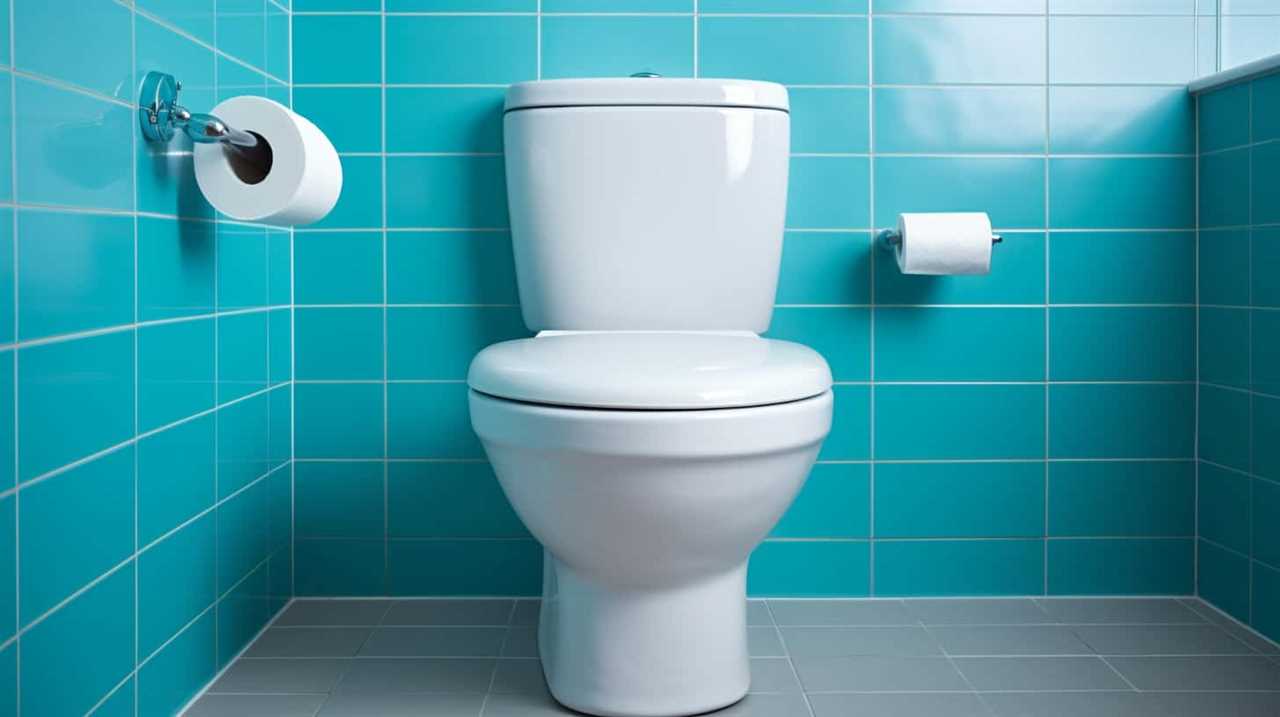
However, we must also consider the environmental impact of this process.
So next time you flush on a plane, imagine the waste being whisked away by a powerful vacuum, leaving behind a clean and sanitary space for all passengers.

